
Barbed Wire
65 - 6,866 Per Kilogram
500 Kilogram (MOQ)
50 gsm barbed wire

Electrical Wiring Services
Get Price Quote
Experience seamless electrical solutions with our expert wiring services. Whether you're setting up a new space or upgrading existing systems, our skilled professionals ensure safe and efficient electrical wiring tailored to your needs. We prioritize precision and adhere to industry standards to guarantee the reliability of your electrical connections. Trust us to deliver top-notch wiring services for residential and commercial projects, providing you with peace of mind and a power setup you can rely on.
Looking for Internal Wiring Services Providers
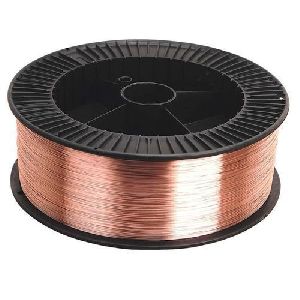
Welding Wire
Get Price Quote

Barbed Wire
Get Price Quote
Chain link sizes available: 12 gauge or 2.5mm: 1.25”, 1.5”, 2.5”. 10 gauge or 3mm: 2”, 2.5”, 3”, 3.5”, 4” 8 gauge or 4mm: 2”, 2.5”, 3”, 3.5”, 4” Chain link wires available: Galvanized and PVC coated. Posts available: Angle and pole.

Aluminium Wires
Get Price Quote
The company is the well known Aluminium Wires Manufacturer and Supplier in Hyderabad. Our Aluminium Wires are offered in a comprehensive range, known for their better conductivity. The range of Aluminium Wires includes Bare Aluminium Wires and DPC Aluminium Wires. Our Aluminium Wires are especially made from the EC grade aluminium wire rod, which is 99.5% (Min) pure. Besides, The Aluminium Wires can be procured from us in diameters ranging between 0.5mm to 8.00mm in hard or annealed condition as per clients requirements.

Aluminum Wire
225 - 226 Per kg
I have Bulk in almunium in TELANGANA i sell
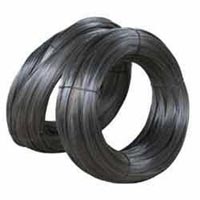
Binding Wire
50 - 70 Per Kilogram
500 Kilogram (MOQ)
Binding Wire is extensively used for binding objects of different types. We are one of the prominent Manufacturers and Suppliers of Binding Wire from Hyderabad, Telangana. Our Binding Wire is manufactured in conformity with the international quality standards. It is highly appreciated for its flexibility, fine finish and great strength. We customize Binding Wire as per the specifications given by the customers.

Electrical Wiring Services
Get Price Quote
Correct installation of electrical wiring is essential to ensure safety and longevity of your investment. And, we can help you in doing the same. Hyderabad (Telangana, India) based service provider, we are rendering dependable solutions for electrical wiring with our team of licensed and experienced electricians. With this, we make sure that the wiring of your home or workplace is done right and on time. Prior to installation, we visit the site, analyze requirements and work accordingly.

Wires
500 - 5,200 Per pcs
1 pcs (MOQ)

submersible wires
Get Price Quote
Used in submersible pumps motors of all sizes for Domestic and Industrial applications. Saves Energy -ETP grade high conductivity annealed copper used. Less current leakage - No air gap between the films Tear resistant-High mechanical strength - High tensile strength Each coil tested at 3500V Heat shock test -At 150C Easy Winding - Resistance annealed copper and controlled OD

Galvanized Iron Wire
50 Per Kilogram

Barbed Wire
Get Price Quote
Barbed wire, also known as barb wire (and frequently in dialect form spelled bob or bobbed), is a type of fencing wireconstructed with sharp edges or points arranged at intervals along the strand(s). It is used to construct inexpensive fences and is used atop walls surrounding secured property. It is also a major feature of the fortifications in trench warfare (as a wire obstacle). A person or animal trying to pass through or over barbed wire will suffer discomfort and possibly injury. Barbed wire fencing requires only fence posts, wire and fixing devices such as staples. It is simple to construct and quick to erect by an unskilled person. It was first conceived in 1865 by Louis Jannin as fil de fer barbelé, French for "barbed iron wire". Joseph F. Glidden ofDeKalb, Illinois received a patent for the modern invention in 1874. Barbed wire was the first wire technology capable of restraining cattle. Wire fences were cheaper to erect than their alternatives and when they became widely available in the United States in the late 19th century they made it affordable to fence much larger areas than before. They made intensive animal husbandry practical on a much larger scale. The most important and most time-consuming part of a barbed wire fence is constructing the corner post and the bracing assembly. A barbed wire fence is under tremendous tension, often up to half a ton, and so the corner post's sole function is to resist the tension of the fence spans connected to it. The bracing keeps the corner post vertical and prevents slack from developing in the fence. Brace posts are placed in-line about 8 feet (2.4 m) from the corner post. A horizontal compression brace connects the top of the two posts, and a diagonal wire connects the top of the brace post to the bottom of the corner post. This diagonal wire prevents the brace post from leaning, which in turn allows the horizontal brace to prevent the corner post from leaning into the brace post. A second set of brace posts (forming a double brace) is used whenever the barbed wire span exceeds 200 feet (60 m). If an 8" post is * feet in length is driven four feet into the ground the brace post assembly can be omitted. When the barbed wire span exceeds 650 ft (200 m), a braced line assembly is added in-line. This has the function of a corner post and brace assembly but handles tension from opposite sides. It uses diagonal brace wire that connects the tops to the bottoms of all adjacent posts. Line posts are installed along the span of the fence at intervals of 8 to 50 ft (2.5 m to 15 m). An interval of 16 ft (5 m) is most common. Heavy livestock and crowded pasture demands the smaller spacing. The sole function of a line post is not to take up slack but to keep the barbed wire strands spaced equally and off the ground. Once these posts and bracing have been erected, the wire is wrapped around one corner post, held with a hitch (a timber hitch works well for this) often using a staple to hold the height and then reeled out along the span of the fence replacing the role every 400 m . It is then wrapped around the opposite corner post, pulled tightly with wire stretchers, and sometimes nailed with more fence staples, although this may make readjustment of tension or replacement of the wire more difficult. Then it is attached to all of the line posts with fencing staples driven in partially to allow stretching of the wire. It is installed from the top down. There are several ways to anchor the wire to a corner post: Hand-knotting. The wire is wrapped around the corner post and knotted by hand. This is the most common method to attaching wire to a corner post. A timber hitch works well as it stays better with wire than with rope. Crimp sleeves. The wire is wrapped around the corner post and bound to the incoming wire using metal sleeves which are crimped using lock cutters. This method should be avoided because while sleeves can work well on repairs in the middle of the fence where there is not enough wire for hand knotting, they tend to slip when under tension. Wire vise. The wire is passed through a hole drilled into the corner post and is anchored on the far side. Wire wrap. The wire is wrapped around the corner post and wrapped onto a special, gritted helical wire which also wraps around the incoming wire, with friction holding it in place. Barbed wire for agriculture use is typically double-strand 12½-gauge, zinc-coated (galvanized) steel and comes in rolls of 1320 ft (402 m) length. Barbed wire is usually placed on the inner (pasture) side of the posts. Where a fence runs between two pastures livestock could be with the wire on the outside or on both sides of the fence. Galvanized wire is classified into three categories; Classes I, II, and III. Class I has the thinnest coating and the shortest life expectancy. A wire with Class I coating will start showing general rusting in 8 to 10 years, while the same wire with Class III coating will show rust in 15 to 20 years. Aluminum-coated wire is occasionally used, and yields a longer life. Corner posts are 6 to 8 inches (15 to 20 cm) in diameter or larger, and a minimum 8 feet (2.4 m) in length may consist of treated wood or from durable on-site trees such as osage orange, black locust, red cedar, or red mulberry, also railroad ties, telephone, and power poles are salvaged to be used as corner posts(poles and railroad ties were often treated with chemicals determined to be an environmental hazard and cannot be reused in some jurisdictions). In Canada spruce posts are sold for this purpose. Posts are driven at least 4 feet (1.2 m) and may be anchored in a concrete base 20 inches (50 cm) square and 42 inches (105 cm) deep. Brace posts are a minimum 4 inches (10 cm) in diameter and are anchored in a concrete base 20 inches (50 cm) square and 24 inches (60 cm) deep. Iron posts, if used, are a minimum 2½ inch (64 mm) in diameter. Bracing wire is typically smooth 9-gauge. Line posts are set to a depth of about 30 inches (75 cm). The main advantage of steel posts is that they can be driven with a post moll or a cylindrical tube closed at one end with plate steel for weight, and pulled out by hand as opposed to wooden posts which must be pounded with a hydraulic pounder and often pulled with a front end loader. Conversely steel posts are not as stiff as wood and wires are fastened with slips along fixed teeth which means variations in driving height effect wire spacing. During the First World War, screw pickets were used for the installation of wire obstacles; these were metal rods with eyelets for holding strands of wire, and a corkscrew-like end that could literally be screwed into the ground rather than hammered, so that wiring parties could work at night near enemy soldiers and not reveal their position by the sound of hammers.Barbed wire, also known as barb wire (and frequently in dialect form spelled bob or bobbed), is a type of fencing wireconstructed with sharp edges or points arranged at intervals along the strand(s). It is used to construct inexpensive fences and is used atop walls surrounding secured property. It is also a major feature of the fortifications in trench warfare (as a wire obstacle). A person or animal trying to pass through or over barbed wire will suffer discomfort and possibly injury. Barbed wire fencing requires only fence posts, wire and fixing devices such as staples. It is simple to construct and quick to erect by an unskilled person. It was first conceived in 1865 by Louis Jannin as fil de fer barbelé, French for "barbed iron wire". Joseph F. Glidden ofDeKalb, Illinois received a patent for the modern invention in 1874. Barbed wire was the first wire technology capable of restraining cattle. Wire fences were cheaper to erect than their alternatives and when they became widely available in the United States in the late 19th century they made it affordable to fence much larger areas than before. They made intensive animal husbandry practical on a much larger scale. The most important and most time-consuming part of a barbed wire fence is constructing the corner post and the bracing assembly. A barbed wire fence is under tremendous tension, often up to half a ton, and so the corner post's sole function is to resist the tension of the fence spans connected to it. The bracing keeps the corner post vertical and prevents slack from developing in the fence. Brace posts are placed in-line about 8 feet (2.4 m) from the corner post. A horizontal compression brace connects the top of the two posts, and a diagonal wire connects the top of the brace post to the bottom of the corner post. This diagonal wire prevents the brace post from leaning, which in turn allows the horizontal brace to prevent the corner post from leaning into the brace post. A second set of brace posts (forming a double brace) is used whenever the barbed wire span exceeds 200 feet (60 m). If an 8" post is * feet in length is driven four feet into the ground the brace post assembly can be omitted. When the barbed wire span exceeds 650 ft (200 m), a braced line assembly is added in-line. This has the function of a corner post and brace assembly but handles tension from opposite sides. It uses diagonal brace wire that connects the tops to the bottoms of all adjacent posts. Line posts are installed along the span of the fence at intervals of 8 to 50 ft (2.5 m to 15 m). An interval of 16 ft (5 m) is most common. Heavy livestock and crowded pasture demands the smaller spacing. The sole function of a line post is not to take up slack but to keep the barbed wire strands spaced equally and off the ground. Once these posts and bracing have been erected, the wire is wrapped around one corner post, held with a hitch (a timber hitch works well for this) often using a staple to hold the height and then reeled out along the span of the fence replacing the role every 400 m . It is then wrapped around the opposite corner post, pulled tightly with wire stretchers, and sometimes nailed with more fence staples, although this may make readjustment of tension or replacement of the wire more difficult. Then it is attached to all of the line posts with fencing staples driven in partially to allow stretching of the wire. It is installed from the top down. There are several ways to anchor the wire to a corner post: Hand-knotting. The wire is wrapped around the corner post and knotted by hand. This is the most common method to attaching wire to a corner post. A timber hitch works well as it stays better with wire than with rope. Crimp sleeves. The wire is wrapped around the corner post and bound to the incoming wire using metal sleeves which are crimped using lock cutters. This method should be avoided because while sleeves can work well on repairs in the middle of the fence where there is not enough wire for hand knotting, they tend to slip when under tension. Wire vise. The wire is passed through a hole drilled into the corner post and is anchored on the far side. Wire wrap. The wire is wrapped around the corner post and wrapped onto a special, gritted helical wire which also wraps around the incoming wire, with friction holding it in place. Barbed wire for agriculture use is typically double-strand 12½-gauge, zinc-coated (galvanized) steel and comes in rolls of 1320 ft (402 m) length. Barbed wire is usually placed on the inner (pasture) side of the posts. Where a fence runs between two pastures livestock could be with the wire on the outside or on both sides of the fence. Galvanized wire is classified into three categories; Classes I, II, and III. Class I has the thinnest coating and the shortest life expectancy. A wire with Class I coating will start showing general rusting in 8 to 10 years, while the same wire with Class III coating will show rust in 15 to 20 years. Aluminum-coated wire is occasionally used, and yields a longer life. Corner posts are 6 to 8 inches (15 to 20 cm) in diameter or larger, and a minimum 8 feet (2.4 m) in length may consist of treated wood or from durable on-site trees such as osage orange, black locust, red cedar, or red mulberry, also railroad ties, telephone, and power poles are salvaged to be used as corner posts(poles and railroad ties were often treated with chemicals determined to be an environmental hazard and cannot be reused in some jurisdictions). In Canada spruce posts are sold for this purpose. Posts are driven at least 4 feet (1.2 m) and may be anchored in a concrete base 20 inches (50 cm) square and 42 inches (105 cm) deep. Brace posts are a minimum 4 inches (10 cm) in diameter and are anchored in a concrete base 20 inches (50 cm) square and 24 inches (60 cm) deep. Iron posts, if used, are a minimum 2½ inch (64 mm) in diameter. Bracing wire is typically smooth 9-gauge. Line posts are set to a depth of about 30 inches (75 cm). The main advantage of steel posts is that they can be driven with a post moll or a cylindrical tube closed at one end with plate steel for weight, and pulled out by hand as opposed to wooden posts which must be pounded with a hydraulic pounder and often pulled with a front end loader. Conversely steel posts are not as stiff as wood and wires are fastened with slips along fixed teeth which means variations in driving height effect wire spacing. During the First World War, screw pickets were used for the installation of wire obstacles; these were metal rods with eyelets for holding strands of wire, and a corkscrew-like end that could literally be screwed into the ground rather than hammered, so that wiring parties could work at night near enemy soldiers and not reveal their position by the sound of hammers.

Barbed Wire
Get Price Quote
We hold expertise in manufacturing and supplying a qualitative range of Barbed Wire. These Barbed Wires are PVC coated iron wire or galvanized wire available in varied weights and coil configurations. Barbed Wire offered by us are one of the economical options for fencing and acclaimed for high quality and longer life. These are widely used to offer maximum safety and security to house and allied areas by providing proper borders and boundaries. SPECIFICATIONS:12 SWG to 148SWG.MATERIALS: Galvanized Iron Wire and PVC Coated Wire.APPLICATIONS: Parks, Gardens, Factories, Road Dividers, Security Zones and Horticulture.

Galvanized Iron Wire
60 - 100 Per Kilogram

Wire
130 - 140 Per Kgs
Wire

Building Wire
Get Price Quote
We are considered as trusted manufacturer, exporter and supplier of building wires in hyderabad, andhra pradesh. Our building wires are safe and long lasting in nature. Made of premium material, our building wires can tolerate high pressure and temperature conditions. We can provide building wires at market leading rates. range : 1.00 sq mm to 120 sq mm single core flexible cables-fr higher fire resistancehigher oxygen indexinsulation fr+hr single core flexible cables-frls special heat resistant and flame retardantlow smoke (frls) evolution pvcinsulation - fr·ls single core flexible cables-frlsh special heat resistant and flame retardant low smoke with reduced halogen evolution pvc.insulation · fr·lsh single core flexible cables-rohs.
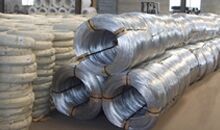
Steel Wire
Get Price Quote
We Manufacture Galvanized Steel Wires with following Specifications, Size:0.90 to 6 mm. Zinc coating 60gsm. to 400gsm. Standards: IS:280, IS:3975, IS:12776, IS:2141, IS:398, BS:498 & Various other National Y International Standards

Galvanized Iron Wire
52 Per Kilogram
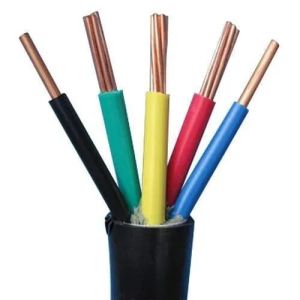
House Wires
460 Per Roll
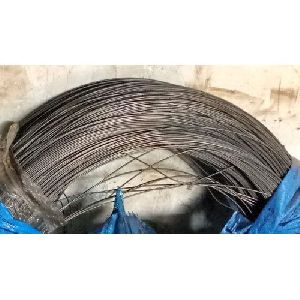
Spring Steel Wire
55,000 Per Metric Ton
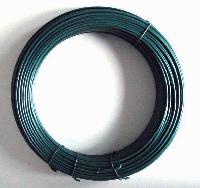
PVC Wires
Get Price Quote
PVC Compound, Pvc Cables, Masterbatches, three pin power cord

Aluminum Wire
Get Price Quote
We are offering aluminum wire.

Galvanized Barbed Wire
Get Price Quote
Civil Contractors, tiles contractors, Plumbing Contractors

Black Wire
Get Price Quote
Black Wire, Galvanised Wire, Chain Link Fence, Iron Nails, Galvanised Wire

Barbed Wire
Get Price Quote
We are offering best Barbed Wire.

Earthing Wire
Get Price Quote
Earthing Wire, Battery Cables, insulated wires, Pvc industrial wires
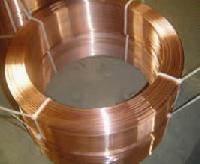
Copper Coated Wires
Get Price Quote
Copper Coated Wires, Aluminium Wires, Winding Wire

Chain Link Wire
Get Price Quote
refrigerators wire shelf, Wire Mesh

Building Wires
Get Price Quote
Building Wires, PVC Insulated Cables, switchboard wiring cables

Enameled Copper Wire
Get Price Quote
Enameled Copper Wire, copper rectangular strip, Paper Covered Copper Strip